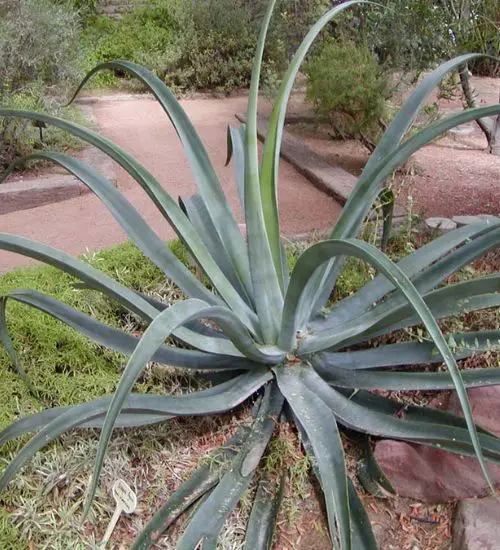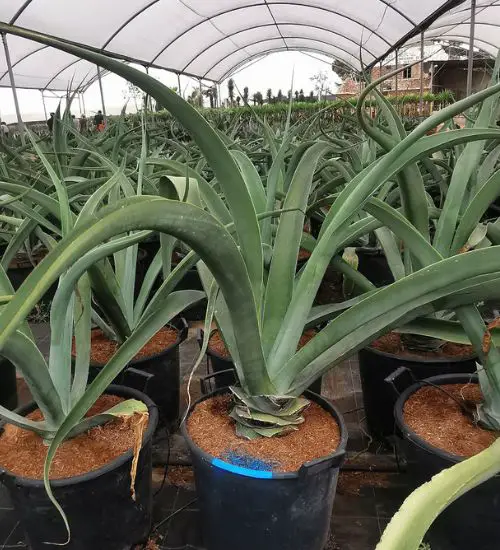Sun: full sun
Water: Typical water needs for a succulent
Temperature: Zone 9a from 20° F to 25° F (-6.7 ° C to -3.9° C) to Zone 11b from 45° F to 50° F (7.2° C to 10° C)
Winter Survival: Winter hardy
Propagation: offsets
Flower: in the Spring and early Summer
Flower Type: Yellow
Toxic: Can be toxic to humans and animals
Dormant: winter
Space Requirement: Outdoors
Common Problems: Plants may rot if overwatered, sunburn, pests
Where to buy Agave Vilmoriniana?
Basc Care for Agave Vilmoriniana
Watering
Regular watering period should be every 2 weeks
One simple tip for you is that you can use some online apps to check the soil status before you go water your succulents. I would recommend the ThePlantsCheck app, it has some nice features there.
Fertilizing
Only feed this succulent during its active growing seasons which means no information. Use the right fertilizer applied in the right amounts. Applying half-strength balanced fertilizer every month or so is recommended for optimal results.
Do not fertilize during winter as the plant is dormant.
Sun & Location Requirements for "octopus agave"
Agave Vilmoriniana requires full sun in order to thrive. When choosing a spot for your succulent, make sure it gets at least 6 hours of direct sunlight per day. If the leaves start to look pale or weak, this could be an indication that the succulent isn't getting enough light.
As per this succulent profile, it is only able to stay healthy when the environment temperature is above the range of zone 9a from 20° F to 25° F (-6.7 ° C to -3.9° C).
Agave Vilmoriniana is an incredibly resilient winter hardy plant that can survive in freeze conditions. Its thick leaves and stems, deep-rooted roots, and ability to store water all contribute to its ability to stay alive even in the coldest of winters. The roots reach deeper into the soil than most other succulents, allowing them to absorb moisture when the air is dry and cold.
Any succulents in the group will need a large space to grow. You should place your pot outdoor. Since this plant needs a lot of space than other succulents, you should consider not planting them together with other succulents/plants.
Propagation
Propagating with offsets is a great way to get more plants from the same mother plant. All you have to do is cut away an offset and pot it in soil, and soon enough you’ll have a brand-new Agave Vilmoriniana!
Toxicity

The toxicity of Agave can vary depending on the individual species, but all species are potentially dangerous if ingested. Symptoms of poisoning may include vomiting, abdominal pain, diarrhea and dizziness. If you believe someone has ingested parts of Agave Vilmoriniana, seek medical help immediately.
Pests and Diseases
Agave Vilmoriniana can be affected common pests and diseases like most of the other succulents such as snails, scale insects, and Snout weevil.
If you do spot any of pest signs, you can treat your succulent using below methods.
- Snails: clean infected plants, soapy water.
- Scale insects: quarantine, clean infected plants, soapy water.
- Snout weevil: apply the systemic insecticide two or three times a year.
Besides that, to prevent serious health issues from happening, keep your succulent in a well-ventilated area and check it regularly for any signs of pests or health problems.


